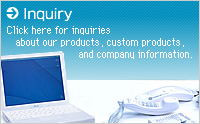Response to TCFD
SMK recognizes climate change as a key management issue and are committed to strengthening our efforts in this regard. We support the recommendations of the TCFD (Task Force on Climate-related Financial Disclosures) and will continue to enhance both the quality and quantity of our disclosure information, fulfilling our accountability in ESG management.
Governance
SMK has established the CSR/Sustainability Committee, chaired by the President, under the Executive Officer's Meeting. This committee serves as a forum to discuss, coordinate, and advance company-wide issues related to CSR, business continuity, and risk management. We consider addressing climate change a key management priority and is advancing this effort through a corporate governance structure that clearly defines the roles of supervisory and executive bodies.
Corporate governance structure
Strategy (Risks/Opportunities)
Our commitment is to assess the risks and opportunities that climate change presents to our business in line with the TCFD Guidelines. Recent revisions to some risk assessments now incorporate scenario analysis. Ongoing efforts will focus on refining assessment methods and enhancing the accuracy of analyses.
<Assumed Scenarios>
■ 2°C scenario (SSP1-2.6):
Scenario in which climate change measures are strengthened internationally and aggressive greenhouse gas reductions are pursued, with the goal of keeping temperature increase below 2°C.
■ 4°C scenario (SSP5-8.5):
A scenario in which temperature increase is likely to reach 4°C due to continued dependence on fossil fuels and little implementation of climate change measures.
●Risks
| |||||||||||||||||
●Opportunities
|
Risk management
Risk management related to climate change is handled by the Environmental Conservation Committee chaired by Director and Executive Deputy President (also responsible for Environmental Div.), which is under the CSR / Sustainability Committee.
●Key measures to address the above risks
- Promote energy conservation activities (investment in high-efficiency
equipment, operational improvement activities).
- Promote possession of solar power generation equipment.
- Promote the development and provision of products aimed at a low-carbon
society (environmentally-friendly products).
- Promote disclosure of climate change-related information.
- Decentralization and optimization of production sites.
●Environmentally-friendly design products
In order to develop products for a low-carbon society, the Company has established its own standards for environmentally conscious design in accordance with the ministerial ordinances of the Ministry of Economy, Trade and Industry.
Specifically, they are largely divided into four categories.
1. Energy-saving and high-efficiency products:
Reduced power consumption and standby power consumption,
improved durability, etc.
2. Resource-saving products:
Smaller, lighter, thinner-walled products, fewer components, etc.
3. Environmentally friendly products:
Use of recycled materials, easier disassembly and repair, solderless,
plating-free, etc.
4. Reduction of burden in the manufacturing process:
Reduction of input materials, easy reuse, etc.
In addition, products used in energy management, renewable energy, energy-saving home appliances, and bicycles are also positioned as products that contribute to the environment, and we aim to contribute to these markets.
Targets and Indices
Each year, we set management indices (environmental indices) related to the environment in order to contribute to climate change countermeasures and business cycles.
Environmental Conservation


